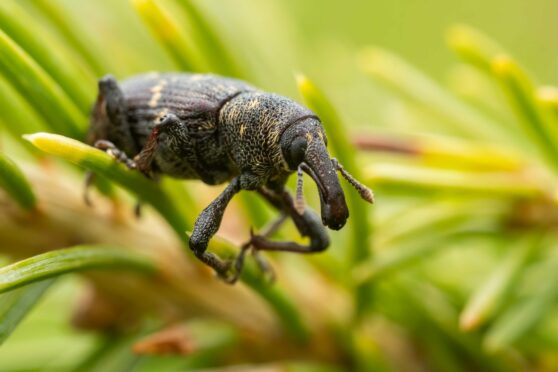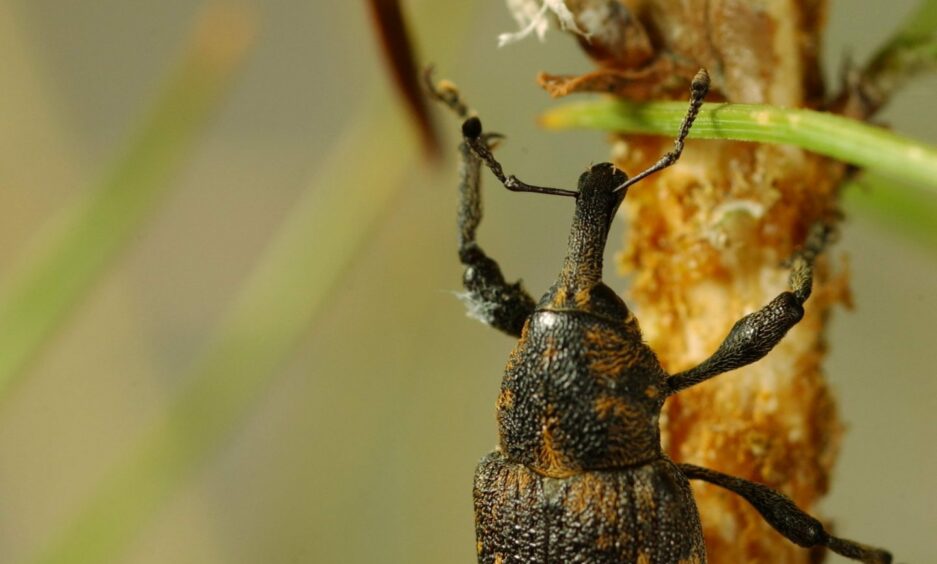A new remote monitoring system is being developed to tackle a major pest in the forestry sector – pine weevils.
A consortium of bodies is working to create a system that will allow land managers to identify and quantify the presence of pine weevils in commercial forests across the country.
The pests are a major challenge for the forestry sector, especially in the first five years of a tree’s life, and they have proven particularly destructive to seedlings of pine and spruce – species commonly grown for the UK’s softwood timber market.
Estimates suggest they cost the forestry industry at least £5 million a year and they can destroy an average of 50% of young conifer trees in a plantation if left unmanaged.
The consortium of bodies working on the project are pest management company Sentomol; the Forestry Commission’s research body Forest Research; the National Resources Institute at the University of Greenwich; and CENSIS – Scotland’s innovation centre for sensing, imaging systems and internet of things (IoT) technologies.
They are developing a system where weevil attractants are placed in unique traps, known as Hylopods, and spread across forest sites to attract and catch the insects.
A camera, using machine vision and artificial intelligence techniques, will then count the number of weevils and an alert will be sent to foresters, using a special IoT network, if the area is deemed to be at high risk from the pests.
“Pine weevils are a big problem for Scotland’s commercial forests, but the options for managing them have been thin on the ground and heavily chemical pesticide dependent,” said Sentomol director, David Loughlin.
“The system we have built will give land managers the ability to remotely monitor their forests and make more evidence-based decisions, rather than relying on collecting fresh wood piles and regularly manually counting the number of insects they find there.”
Forest Research’s senior research scientist, Roger Moore, said those working in the forestry sector did not want to use insecticides to tackle weevils unless they really had to.
He said: “This system will give us the information we need to make the right decision about managing the problem of pine weevils in our forests as efficiently as possible.
“We successfully trialled an earlier prototype at a couple of sites and now want to roll this technology out more widely.”
CENSIS’s director for strategic projects, Stephen Milne, said the system combined a range of different technologies in an exciting way.
He said: “It is bringing together edge-based computing with machine vision and IoT to provide a low-cost remote monitoring capability that can help forestry professionals make more informed decisions.
“Most importantly, it is solving an important real-world problem that affects not only Scotland – where the Scottish Government has set ambitious targets for re-foresting land and growing forestry’s importance to the economy – but also the wider UK and Europe.”
Support for farmers to plant trees part of national woodland strategy













Conversation